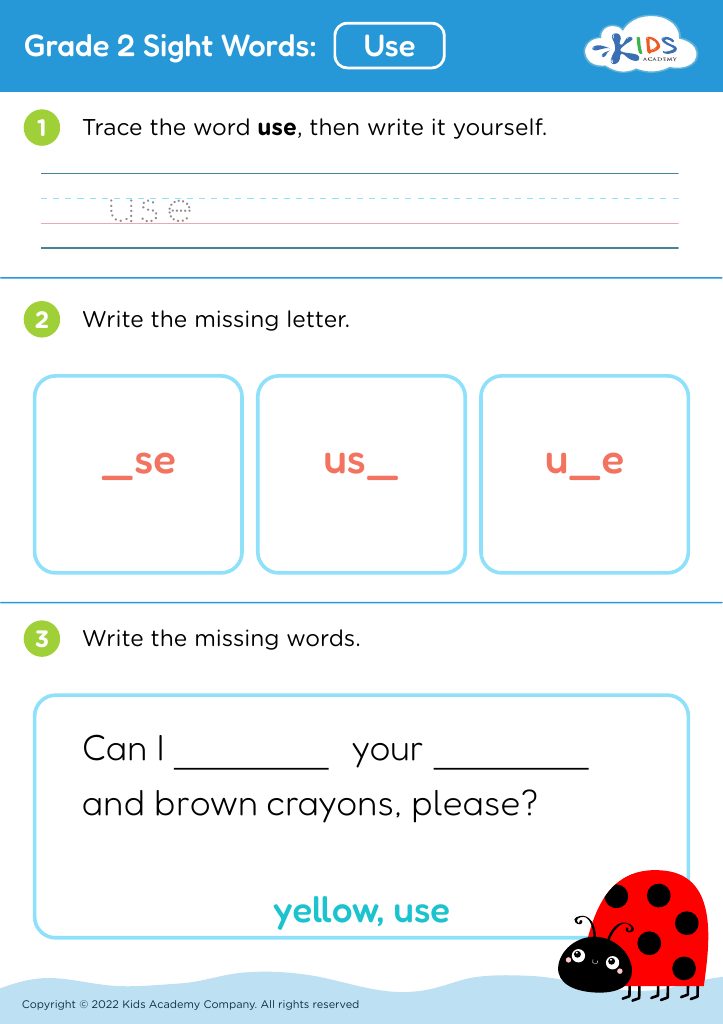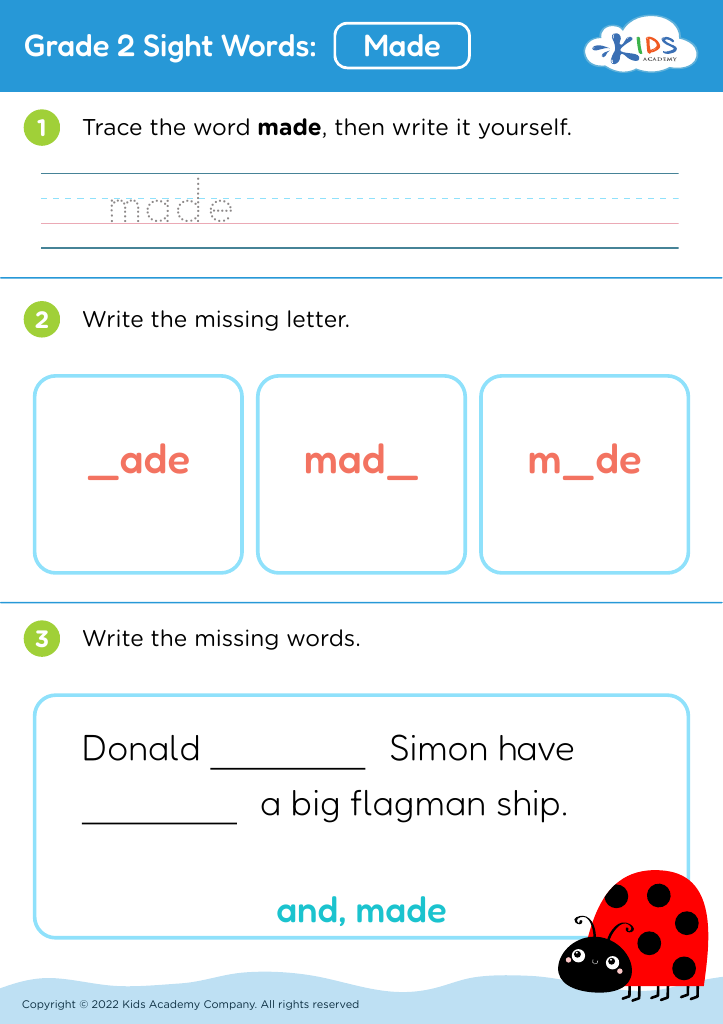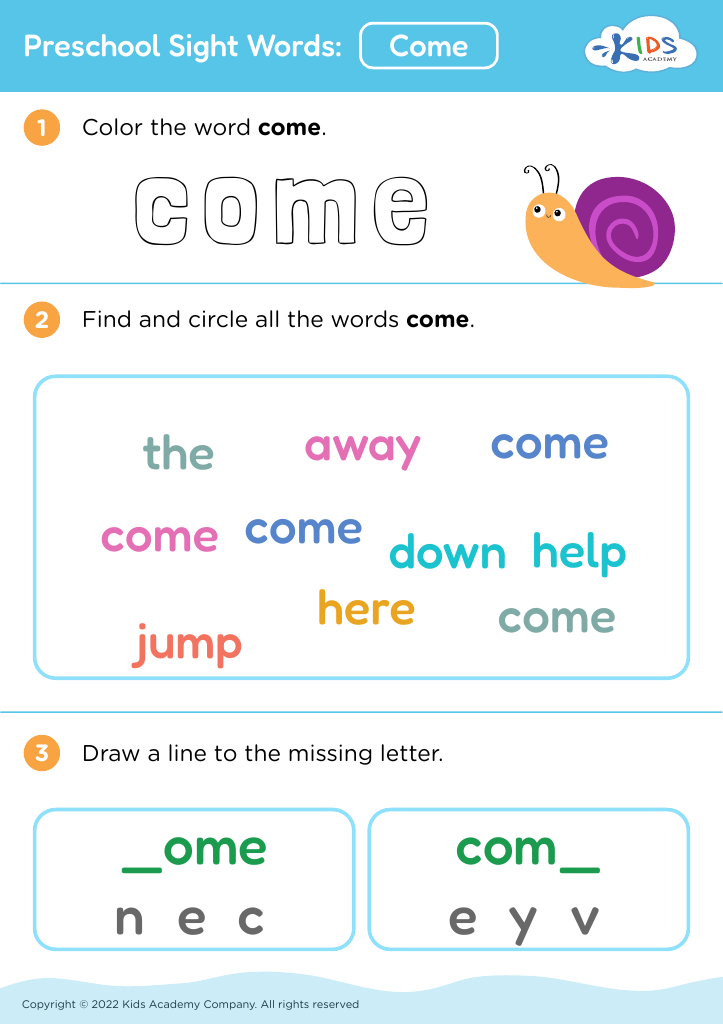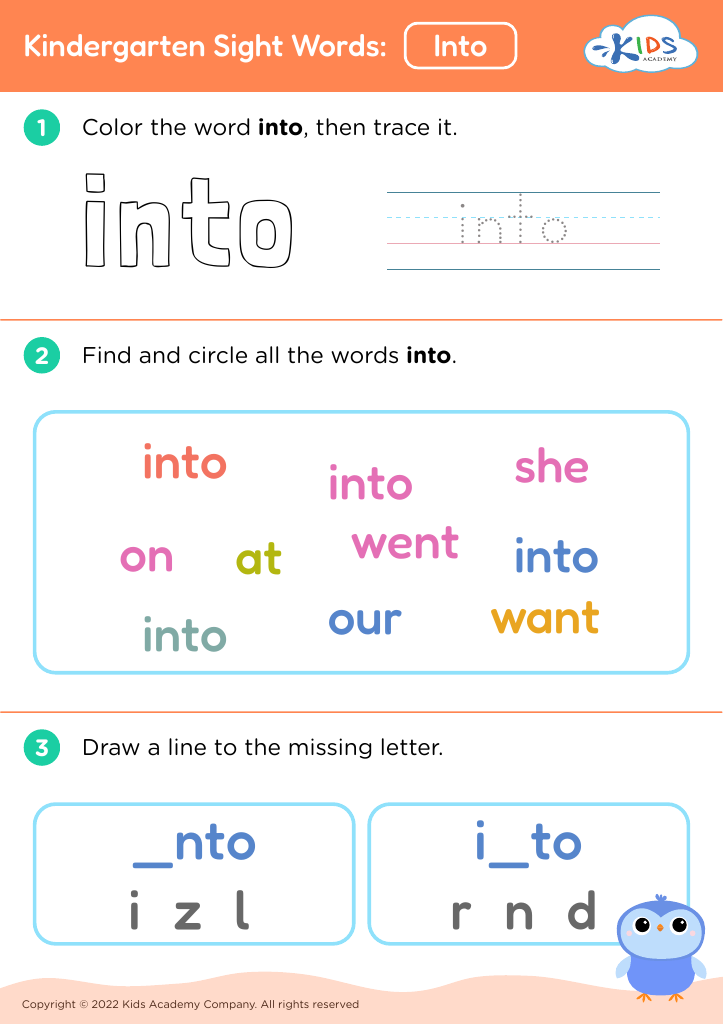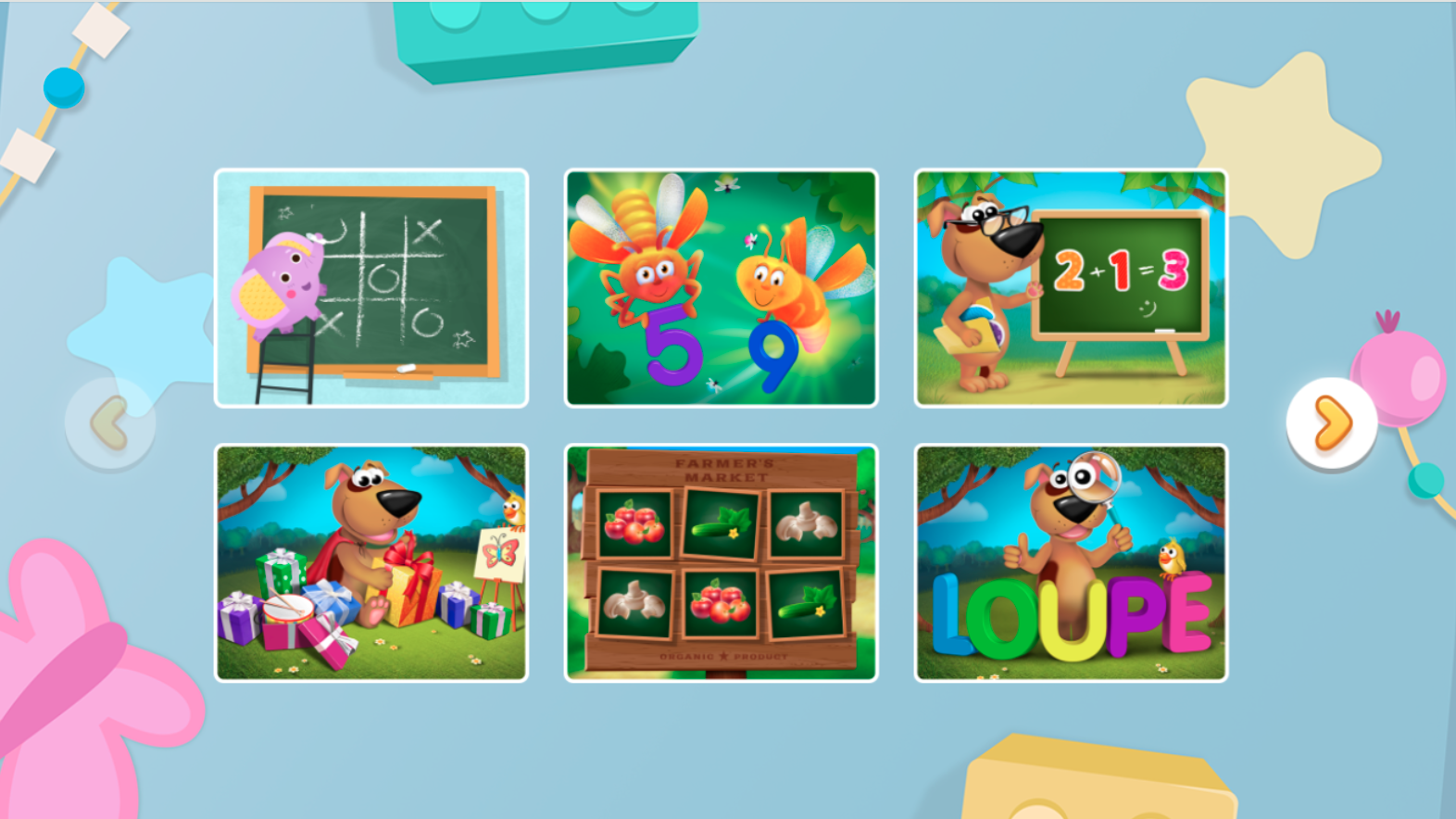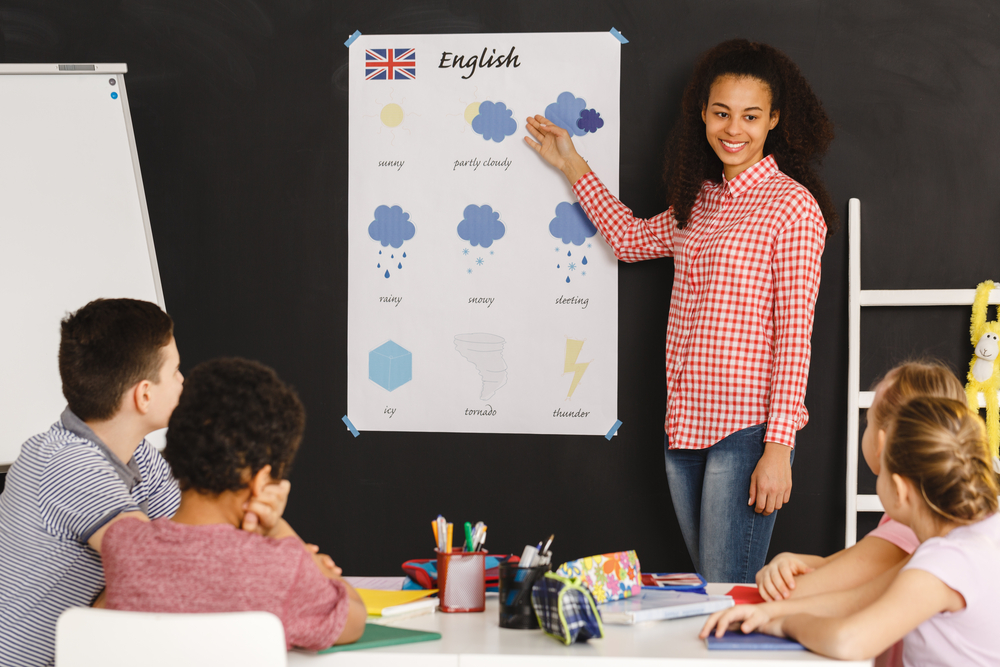Recognizing Patterns Sight Words Worksheets for Ages 4-8
5 filtered results
-
From - To
"Recognizing Patterns Sight Words Worksheets for Ages 4-8" offers engaging and educational resources designed to help young learners enhance their reading skills. Our worksheets combine fun activities with proven learning techniques to make mastering sight words and recognizing patterns an enjoyable experience for children. Tailored specifically for kids aged 4-8, these worksheets promote early literacy, improve vocabulary, and build a strong foundation for reading fluency. Each worksheet is crafted to capture children's attention and keep them motivated. Boost your child's reading skills today with our expertly designed sight words and pattern recognition worksheets!
Recognizing patterns and sight words at an early age, particularly between 4 to 8 years, lays a vital foundation for a child's academic and cognitive development. For parents and teachers, emphasizing these elements is crucial because they enhance reading fluency. Sight words, often high-frequency words, appear frequently in text and recognizing them by sight allows children to read more smoothly without stopping to decode each word.
Similarly, recognizing patterns fosters critical thinking and problem-solving skills. In reading, noticing patterns helps children predict and understand text better, which enhances comprehension. Patterns also play a significant role in mathematics, aiding children in grasping numerical and geometric concepts, which encourages logical reasoning and spatial awareness.
Additionally, mastering sight words and patterns boosts a child's confidence and motivation as they become more proficient readers and problem solvers. This confidence creates a positive feedback loop, where success breeds motivation, leading to further success, thus fostering a lifelong love for learning.
Ultimately, parents and teachers who prioritize these foundational skills equip children with essential tools for literacy and numeracy, setting them up for future academic success and enhancing their overall learning experience.


